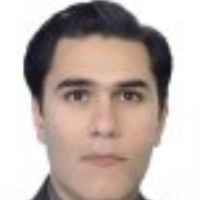Prediction of combined effect of climate and land use changes on soil erosion in Iran using GloSEM data
Soil erosion is a complex process with adverse environmental impacts. Therefore, in this study, to assess the severity of soil erosion in Iran watersheds, the validated data set of the Global Soil Erosion Modeling project (GloSEM database) were used. This project includes baseline scenario (2015) and future forecasts (2070) of soil erosion with the effects of climate change in three scenarios RCP2.6, RCP4.5 and RCP8.5 on rainfall erosivity factor (R) and the effects of land use change in three combined scenarios SSP1-RCP2.6, RCP4.5 SSP2- and SSP5- RCP8.5 on vegetation (C) and soil protection (P) factors. The results showed that the vulnerability of central, southern, and eastern watersheds due to climate change and land use chaange was higher than other watersheds. In these areas, even without considering the effects of climate change, the trend of soil erosion changes in the baseline scenario (2015) with SSP2-RCP4.5 and SSP5-RCP8.5 scenarios has been increasing, but declining in humid or semi-humid areas in north and west. Considering the combined effects of land use and climate change, the trend of soil erosion changes between the baseline scenario (2015) with the scenarios of SSP1-RCP2.6 (with an average increase of 184%), SSP2-RCP4.5 (with an average increase of 243%) and SSP5- RCP8.5 (with an average increase of 341%) has been increasing in all watersheds except Aras watershed. The results of the study indicate that the vulnerability of more than 10 times in the central watersheds of Iran due to climate and land use changes by 2070.
-
A Quantitative Assessment of The Impacts of Agricultural Development, With A Focus on Food Security and Desertification Risk in The Balajam Plain of Torbat Jam County, Khorasan Razavi Province
Mostafa Rezvanimoghadam, Morteza Akbari *, Mozhgan Sabet Teimouri, Shojaat Zare
Desert Management, -
Desertification Risk Assessment and Providing Management Strategies using the DPSIR-M Model in Khorasan Razavi province
Morteza Akbari *, Mahboobeh Sarbazi, Ali Sibevei, Somayeh Fadaei
Journal of Geography and Environmental Hazards,



